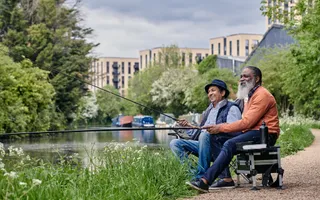Status: Listed on the International Union for Conservation of Nature (IUCN) Red List of Threatened Species.
Several sturgeon species are listed under the Convention on International Trade in Endangered Species of Wild Fauna and Flora agreement (CITIES) to limit their sale and exploitation.
Sturgeon cannot be kept in a fishery in England and Wales, under the terms of the Keeping & Introduction of Fish Regulations 2015. This is regulated by the Environment Agency and Natural Resources Wales.
Confusingly sturgeon are sold as an ornamental fish species and can be kept in aquaria and isolated garden ponds under the terms of the Prohibition of Keeping and Release of Live Fish (England) Order 2014.
To protect the genetic integrity of the European sturgeon, the regulatory bodies won't permit them to be introduced into fisheries or the wild.
Appearance: the European sturgeon is instantly recognisable with its elongated body, flattened snout, distinctive plates (although no scales), barbels, small mouth on the underside of its body and elongated upper tail lobes.
They can grow up to six metres and weigh up to 400kg. Their body structure is more similar to sharks, in that they have a cartilaginous skeleton, rather than a bony one.
British record: a 388lb specimen was caught (foul hooked) by Alec Allen on rod and line in 1932 on the River Towy, Wales.
Lifespan: the average lifespan is 50 to 60 years, but some can live to well over 100 years. They reach sexual maturity aged 20 years or more.
Where to catch a sturgeon
It is currently unlikely that you'll catch a wild European sturgeon in a UK river, although historically they were present in significant numbers in the larger UK rivers. According to renowned angling historian, Fred Buller, they don't feed in freshwater. It is understood that every sturgeon caught on rod and line in the UK had been foul hooked.
The advice is that any sturgeon caught must be reported to the Environment Agency or Natural Resources Wales, with a photograph (include a distinctive area landmark), and then returned to the water unharmed.
Find out more about the European sturgeon - is it truly a lost British species?





